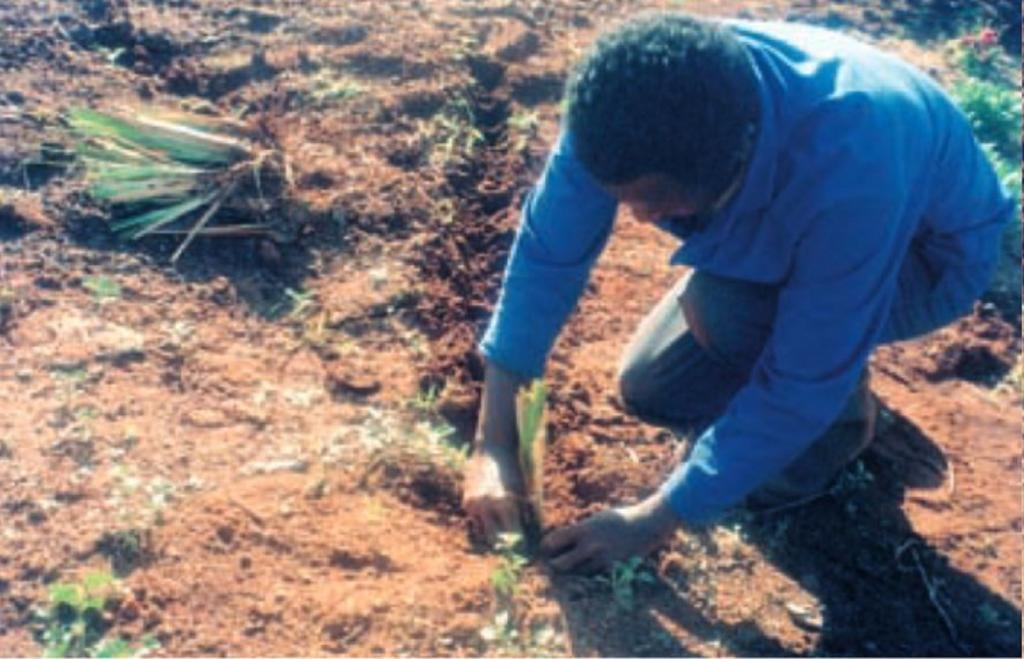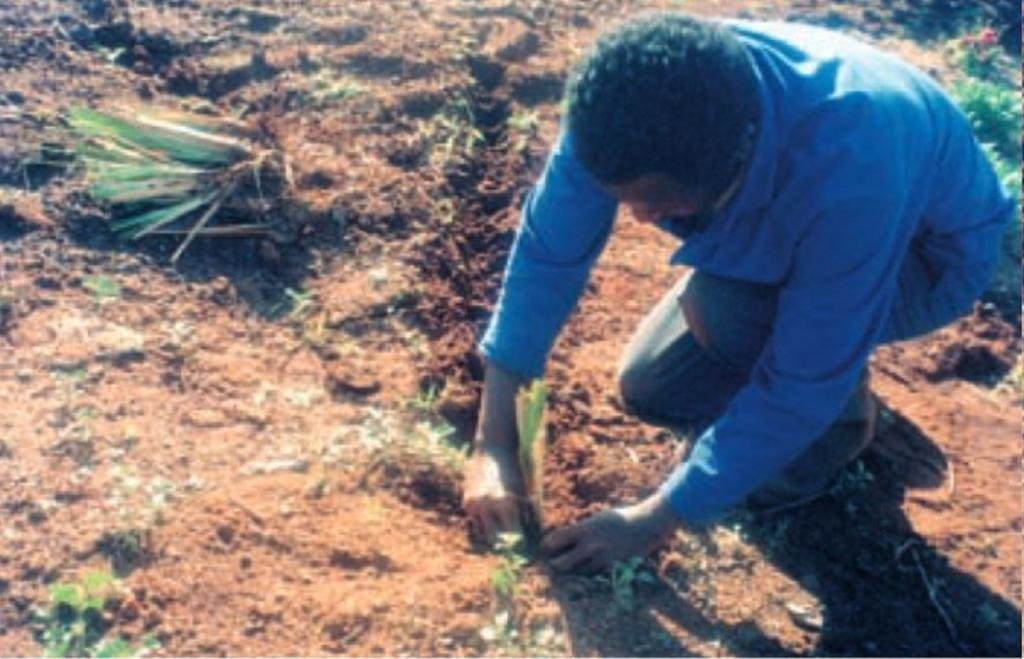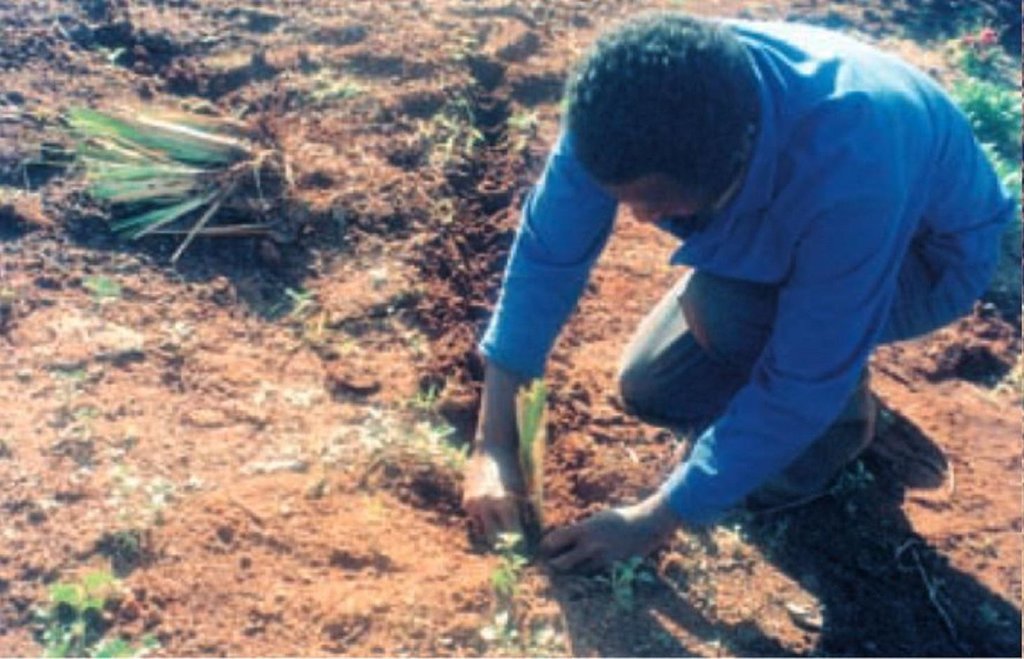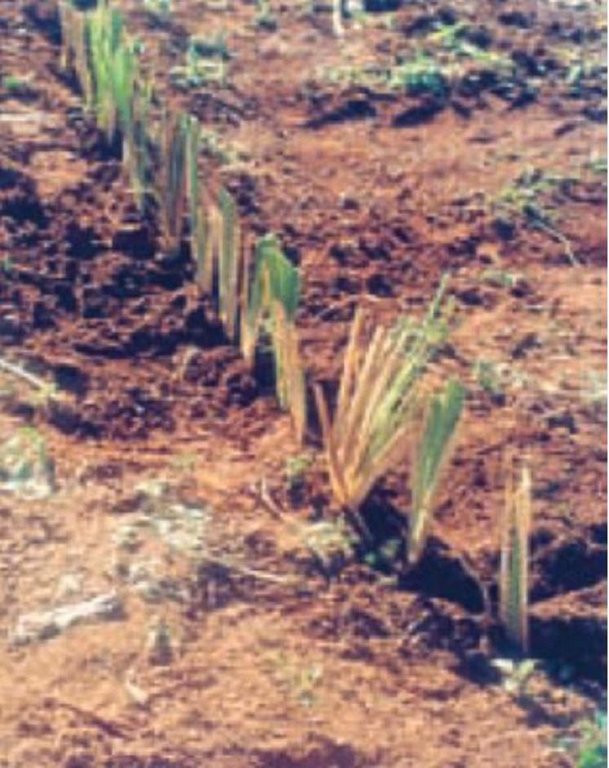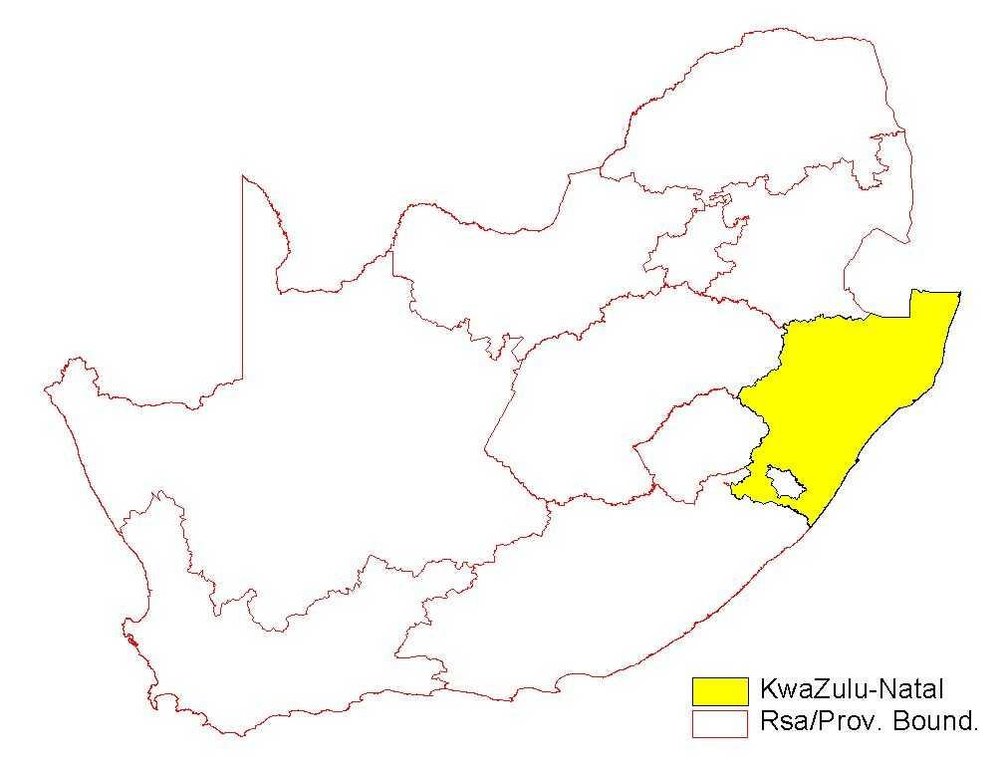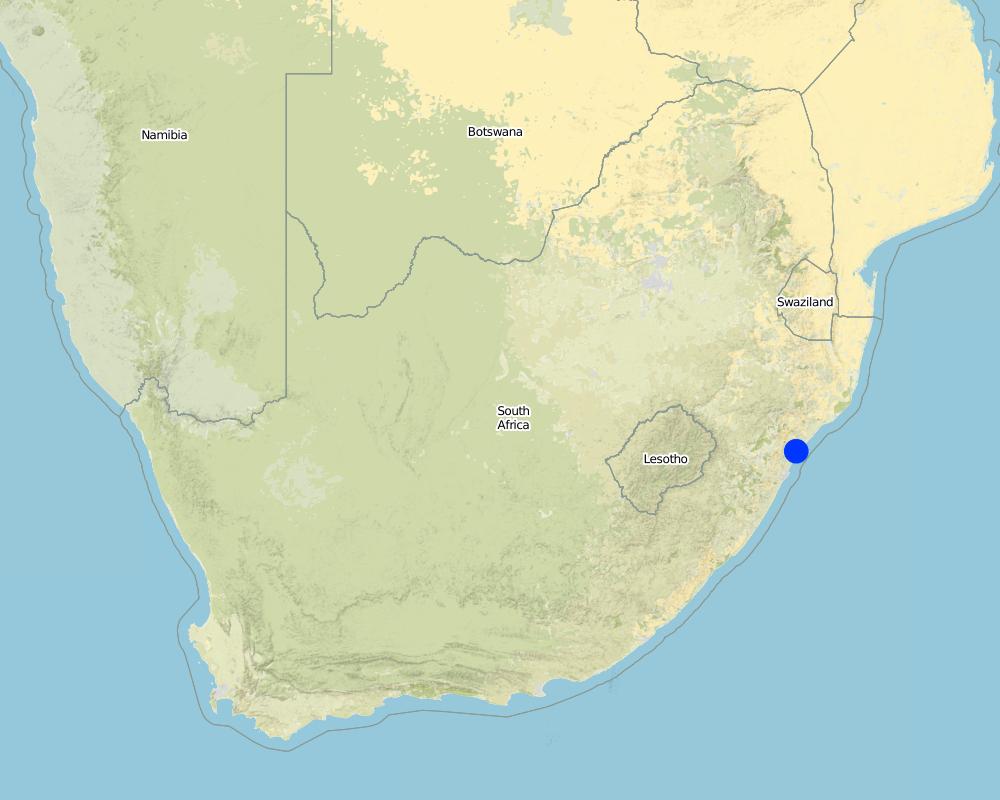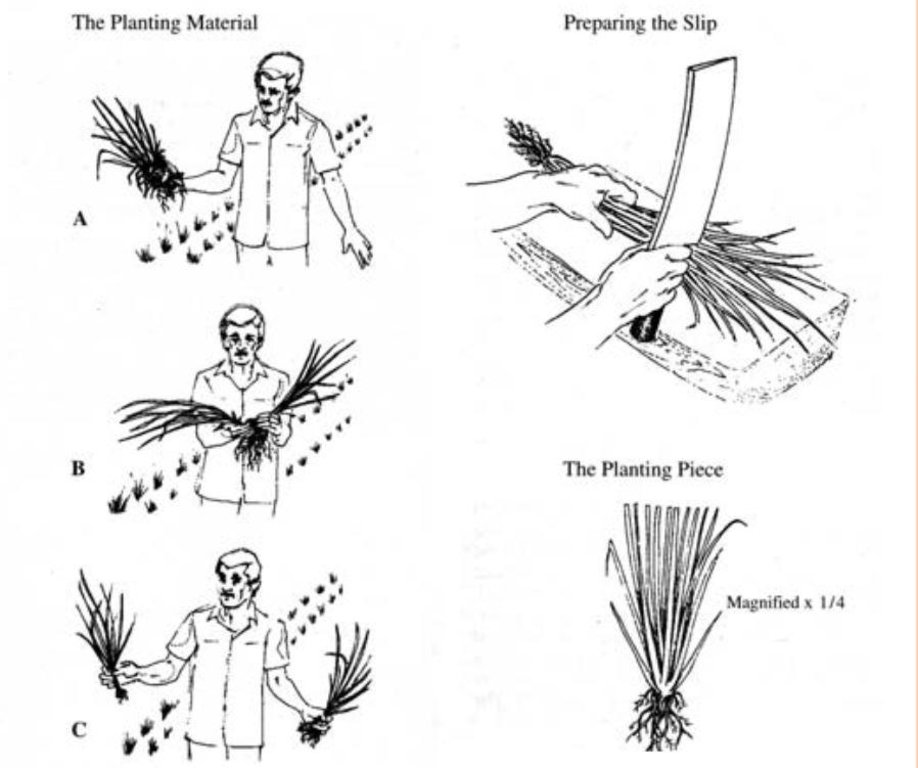Self teaching [ЮАР]
- Создание:
- Обновить:
- Составитель: Philippe Zahner
- Редактор: –
- Рецензенты: Fabian Ottiger, Deborah Niggli
approaches_2611 - ЮАР
Просмотреть разделы
Развернуть все Свернуть все1. Общая информация
1.2 Контактные данные специалистов и организаций, участвующих в описании и оценке Подхода
Специалист по УЗП:
van der Merwe Rinda
rinda@arc.agric.za
Institute for Soil, Climate and Water
P/Bag x79, 0001 Pretoria
ЮАР
Название проекта, содействовавшего документированию/оценке Подхода (если применимо)
Book project: where the land is greener - Case Studies and Analysis of Soil and Water Conservation Initiatives Worldwide (where the land is greener)Название организации (-ий), содействовавших документированию/оценке Подхода (если применимо)
Swiss Agency for Development and Cooperation (DEZA / COSUDE / DDC / SDC) - ШвейцарияНазвание организации (-ий), содействовавших документированию/оценке Подхода (если применимо)
Institute for Soil, Climate & Water - ЮАР1.3 Условия, регламентирующие использование собранных ВОКАТ данных
Составитель и ответственный/-ые специалист(-ы) согласны с условиями, регламентирующими использование собранных ВОКАТ данных:
Да
1.4 Ссылка (-и) на Анкету (-ы) по Технологиям УЗП
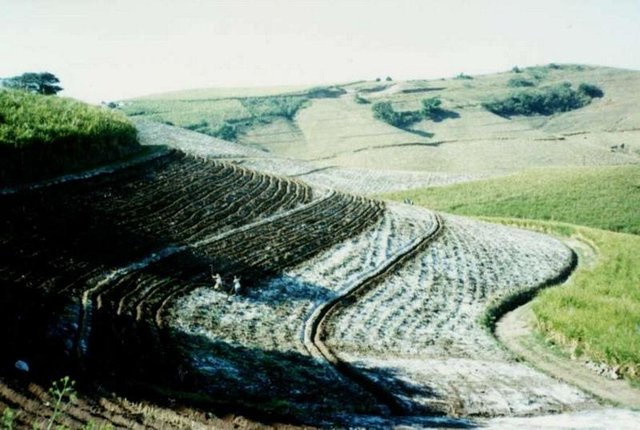
Vetiver grass soil conservation system [ЮАР]
Contour lines of vetiver grass planted within fields of sugar cane, on stream banks and roadsides, to act as ‘hedges against erosion’.
- Составитель: Unknown User
2. Описание Подхода УЗП
2.1 Краткое описание Подхода
Learning how to use vetiver grass as a vegetative conservation barrier through instructions from a booklet and hands-on practical experience.
2.2 Подробное описание Подхода
Подробное описание Подхода:
Aims / objectives: The manager of the farm was given a book and video on vetiver grass by the Mazda group from UK. His objective was to teach himself to improve his conservation system. Already he had a number of consercation strategies, including terracing, minimum tillage, mulching and strip-cropping, but he felt there was a need to better his syste,. Through self-teaching he gave himself an oppurtunity to do so.
There had been some vetiver plants on the farm for 40 years, and it held the soil in place where it grew. This vetiver grew into huge clumps comprising many splits (tillers). The book demonstrated how vetiver could be dug up, split and planted in a continuous barrier hedge for soil and water conservation. In other words, the book offered the possibility of improving on what was already there.
The approach therefore was to take ideas from a book, testing those ideas and see how they worked in practice. The approach has developed further by the farmer spreading his message to neighbours, some of whom have copied the system after visiting his farm and seeing the results for themselves. While the original handbook had been aimed especially at Indian farmers, subsequent to the successful experience of this particular farmer, a locally focussed handbook has been recently prepared in English and Zulu by the South African Vetiver Network.
2.3 Фотографии, иллюстрирующие Подход
2.5 Страна/ регион/ место, где применялся Подход
Страна:
ЮАР
Административная единица (Район/Область):
Kwa-Zulu Natal
Более точная привязка места:
Lower Tugela District, South Africa
Map
×2.6 Даты начала и окончания реализации Подхода
Год начала реализации:
1989
2.8 Каковы цели/ задачи Подхода
The Approach focused on SLM only
test and try a new method by self-teaching and gaining hands-on experience
The SLM Approach addressed the following problems: lack of knowledge about alternative conservation technologies, need for a new and cheap supplement to existing forms of soil and water conservation within sugar cane, that could be tested and tried by the farmer himself without need for outside advice.
2.9 Условия содействующие применению Технологии/ Технологий в рамках Подхода или затрудняющие его
Наличие/ доступность финансовых ресурсов и услуг
- затрудняют
Need to find a cheap supplement to existing SWC in sugar cane
Treatment through the SLM Approach: Discovery of vetiver grass barrier hedge technology described in a booklet
Нормативно-правовая база (землевладение, права на земле- и водопользование)
- содействуют
The existing land ownership, land use rights / water rights greatly helped the approach implementation: Made own decision and started to implement immediately
3. Участие и распределение ролей заинтересованных сторон
3.1 Заинтересованные стороны, участвующие в реализации Подхода и их роли
- местные землепользователи/ местные сообщества
Working land users were mainly men (Also women, the men are used for more physical work (harder))
3.2 Участие местных землепользователей/ местных сообществ на разных стадиях реализации Подхода
| Участие местных землепользователей/ местных сообществ | Перечислите участников и опишите их вовлеченность | |
|---|---|---|
| инициирование/ мотивация | самоорганизация | looking for ideas |
| планирование | самоорганизация | reading and thinking through the possibilities |
| выполнение | самоорганизация | paying farm labourers to plant the grass |
| мониторинг/ оценка | самоорганизация | observation |
| Research | нет | not applicable |
3.3 Схема реализации (если имеется)
Описание:
Establishing vetiver hedges: instructions on preparation for planting in the vetiver handbook.
Автор:
World Bank, 1990
3.4 Принятие решений по выбору Технологии/ Технологий УЗП
Укажите, кто принимал решение по выбору применяемой Технологии/ Технологий:
- исключительно землепользователи (по собственной инициативе)
Поясните:
land user driven (bottom-up). Literature
Decisions on the method of implementing the SLM Technology were made by by land users* alone (self-initiative / bottom-up). land user driven (bottom-up).
4. Техническая поддержка, повышение компетенций и управление знаниями
4.1 Повышение компетенций/ обучение
Проводилось ли обучение землепользователей/ других заинтересованных лиц?
Да
Укажите, кто проходил обучение:
- землепользователи
Если существенно, укажите гендерный и возрастной состав, статус, этническую принадлежность и т.д.
self-taught through use of World Bank's vetiver handbook
Тип обучения:
- self-taught, hands-on experience
4.4 Мониторинг и оценка
Являются ли мониторинг и оценка частью Подхода?
Да
Комментарии:
bio-physical aspects were regular monitored by land users through observations; indicators: vetiver performance
technical aspects were ad hoc monitored by land users through observations
economic / production aspects were ad hoc monitored by land users through observations
area treated aspects were regular monitored by land users through measurements
no. of land users involved aspects were ad hoc monitored by land users through observations
There were no changes in the Approach as a result of monitoring and evaluation
There were no changes in the Technology as a result of monitoring and evaluation
5. Финансирование и внешняя материальная поддержка
5.1 Годовой бюджет мероприятий по УЗП в рамках Подхода
Комментарий (например, основные источники финансирования/ ключевые доноры):
Approach costs were met by the following donors: other (farmer itself): 100.0%
5.2 Финансирование и внешняя материальная поддержка, предоставляемая землепользователям
Предоставлялась ли землепользователям финансовая/ материальная поддержка для применения Технологии /Технологий?
Нет
5.3 Субсидии на отдельные затраты (включая оплату труда)
Если труд землепользователя был существенным вкладом, укажите, был ли этот вклад:
- добровольный
5.4 Кредитование
Предоставлялись ли в рамках Подхода кредиты на мероприятия УЗП?
Нет
6. Анализ влияния и заключительные положения
6.1 Влияние Подхода
Сумел ли Подход помочь землепользователям внедрить и поддерживать технологии УЗП?
- Нет
- Да, немного
- Да, умеренно
- Да, существенно
Land users can continue without support and at least a modest spontaneous expansion of adoption is expected.
Did other land users / projects adopt the Approach?
- Нет
- Да, немного
- Да, умеренно
- Да, существенно
Three neighbouring farmers have adopted the technology throught their observations
6.3 Долгосрочная устойчивость мероприятий в рамках Подхода
Могут ли землепользователи самостоятельно (без внешней поддержки) продолжать применение того, что было реализовано в рамках Подхода?
- да
Если да, опишите как:
Land users can continue without support and at least a modest spontaneous expansion of adoption is expected.
6.4 Сильные стороны/ преимущества Подхода
| Сильные стороны/ преимущества/ возможности по мнению землепользователей |
|---|
| Neighbours can easily see and copy (How to sustain/ enhance this strength: Farmer-to-farmer visits could be promoted through self-help groups and associations.) |
| A very cheap method of extension/knowledge transfer (How to sustain/ enhance this strength: Produce and disseminate booklets and information on the internet more widely.) |
| Сильные стороны/ преимущества/ возможности по мнению составителя или других ключевых специалистов |
|---|
| A technical system devised from a handbook and experience rather than needing a project or intensive visits from extension agents (How to sustain/ enhance this strength: Make sure such handbooks are spread and available in local languages.) |
6.5 Слабые стороны/ недостатки Подхода и пути их преодоления
| Слабые стороны/ недостатки/ риски по мнению составителя или ответственных специалистов | Возможные пути их преодоления/снижения? |
|---|---|
| Not everyone has access to such teaching material or is literate | Spread literature and information more widley and in local languages both in written form and on the radio. |
7. Справочные материалы и ссылки
7.1 Методы сбора/источники информации
- выезды на места, полевые обследования
- опросы землепользователей
7.2 Ссылки на опубликованные материалы
Название, автор, год публикации, ISBN:
World Bank (1990): Vetiver Grass: The Hedge against Erosion
Где опубликовано? Стоимость?
World Bank, Washington D.C.
Ссылки и модули
Развернуть все Свернуть всеСсылки

Vetiver grass soil conservation system [ЮАР]
Contour lines of vetiver grass planted within fields of sugar cane, on stream banks and roadsides, to act as ‘hedges against erosion’.
- Составитель: Unknown User
Модули
Нет модулей


